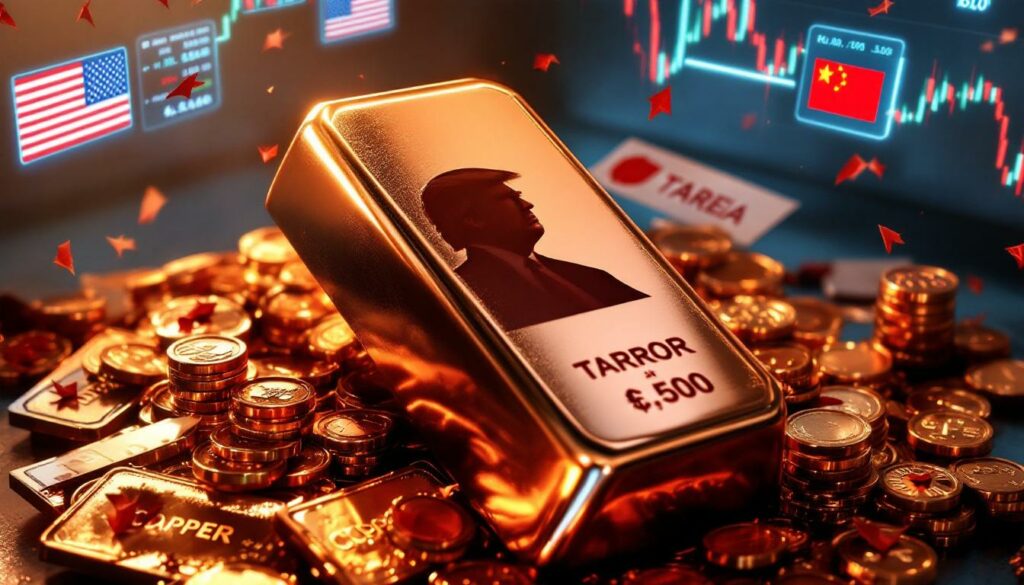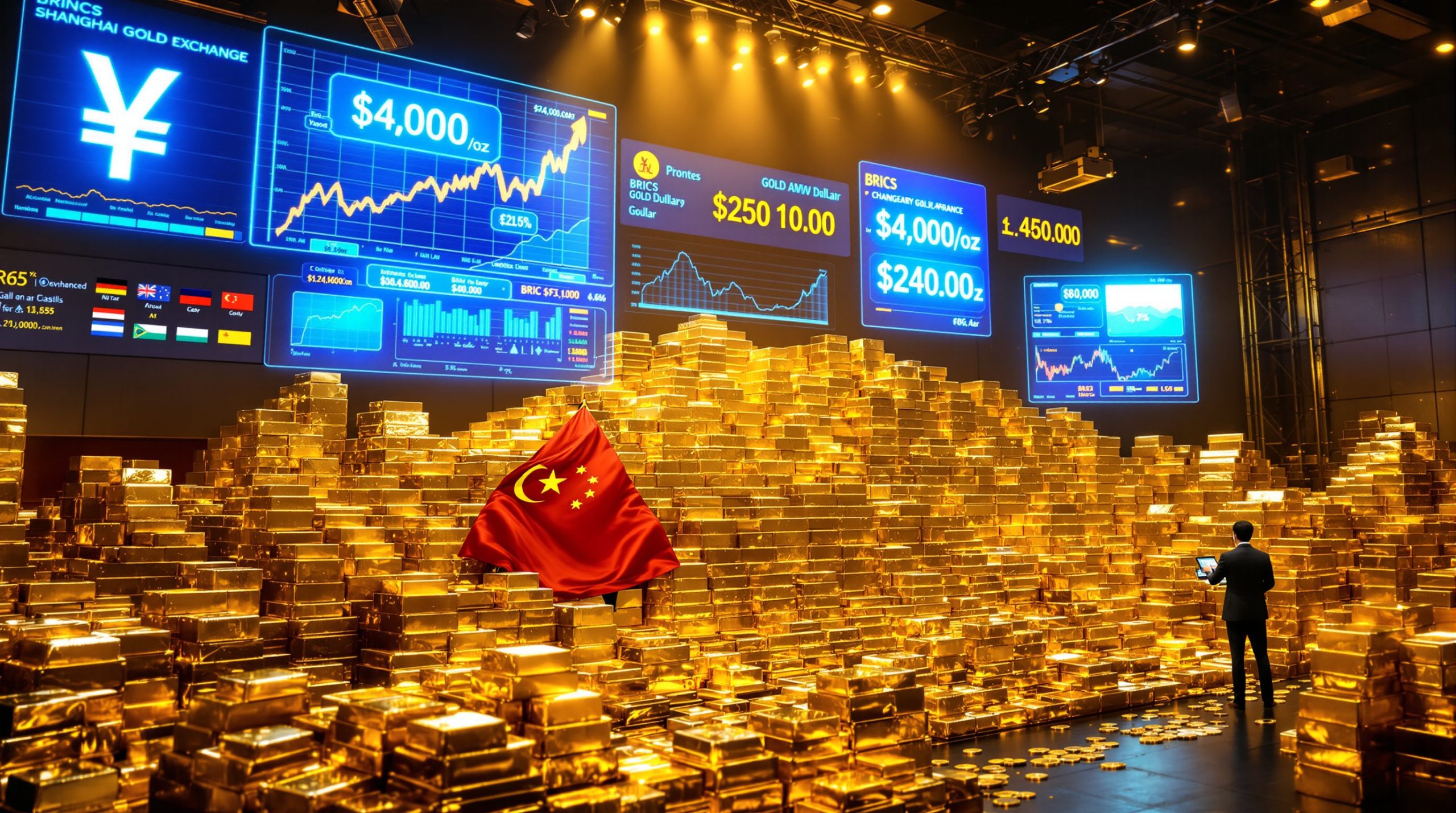How Are Tariff Threats Affecting Copper Markets?
The global copper market finds itself in a state of heightened uncertainty following recent tariff announcements, creating significant ripples across trading floors worldwide. On July 7, 2025, statements regarding potential tariff impact on copper sent commodities traders scrambling to reassess positions and hedge exposure.
The current trade tension centers around a critical July 9th deadline for temporary tariff suspensions. According to official statements, countries failing to reach trade agreements with the United States face reversion to April tax levels starting August 1st—a scenario creating considerable anxiety among market participants.
"Multiple major agreements are close to being finalized," noted U.S. Treasury Secretary Bessent in a statement that briefly calmed markets before selling pressure resumed. His comments suggest ongoing negotiations might prevent the full implementation of threatened tariffs, though tariff uncertainty and copper prices continue to move in tandem.
Market Reaction to Tariff Uncertainty
The immediate market reaction to the tariff announcements was swift and pronounced. The London Metal Exchange (LME) copper price declined approximately 1% following the news, settling at $9,852 per metric ton. Similarly, Shanghai Futures Exchange (SHFE) copper contracts experienced a downward shift, with the benchmark 2508 contract declining 0.56% to 79,720 yuan per metric ton.
Trading volume analysis reveals significant activity across both exchanges, with approximately 12,000 lots traded on the LME and 17,000 lots on the SHFE during the session. More tellingly, open interest positions stood at 284,000 lots on the LME and 212,000 lots on the SHFE—suggesting substantial hedging activity as market participants position themselves for potential volatility.
"The combination of tariff uncertainty and recent changes in physical supply conditions has created a perfect storm for copper price volatility," notes SMM Research in their July 7 morning comment. "Traders are increasingly focused on July 9 and August 1 as critical inflection points for price direction."
What's Happening with Global Copper Price Movements?
Recent Price Performance Analysis
LME copper opened the trading session at $9,872 per metric ton, briefly reaching an intraday high of $9,896 before encountering resistance and retreating to lows of $9,848. Technical analysts point to the psychological $9,900 level as a significant resistance point, with support emerging around the $9,840-$9,850 range based on recent trading patterns.
The SHFE copper market displayed similar price action, opening at 79,810 yuan per metric ton before consolidating lower throughout the session. The 80,000 yuan level continues to act as a critical psychological barrier, with buyers hesitant to push prices above this threshold amid the current tariff uncertainty and copper prices volatility.
Technical indicators suggest copper may remain range-bound in the short term, with directional momentum likely dependent on trade policy developments. The relative strength index (RSI) for both LME and SHFE copper currently sits in neutral territory, reflecting the market's wait-and-see approach ahead of critical deadlines.
Fundamental Supply Factors Influencing Prices
Beyond tariff concerns, fundamental supply dynamics continue to influence copper price movements. According to SMM analysis, "mainstream standard-quality and high-quality copper remained tight" until mid-week, when Russian cargo arrivals helped ease spot market conditions.
This supply tightness has been particularly pronounced in premium-grade copper categories, where industrial users have reported difficulty securing adequate volumes for manufacturing processes. The arrival of Russian shipments helped alleviate some immediate supply concerns, though market participants remain cautious about potential disruptions if trade barriers increase.
Inventory levels across major exchanges show a mixed picture, with LME warehouses reporting modest declines while SHFE stocks have stabilized. This inventory situation, combined with potential trade flow disruptions, creates a complex fundamental backdrop for price movements independent of tariff considerations.
How Do Tariffs Impact Copper Supply Chains?
Global Trade Flow Disruptions
Tariff implementations historically trigger significant rerouting of metal shipments as traders seek to minimize cost impacts. The current uncertainty has already begun influencing shipping decisions, with Russian copper cargoes demonstrating how quickly supply flows can adjust to avoid potential tariff exposure.
"The arrival of Russian material helped loosen an otherwise tight spot market," notes SMM research, highlighting how quickly international traders can redirect shipments in anticipation of changing trade policies. This flexibility, however, comes at a cost—rerouting typically increases shipping expenses by 5-8% according to industry estimates.
For manufacturers dependent on copper imports, these adjustments create significant planning challenges. Production schedules built around expected delivery timelines face disruption when suppliers suddenly reroute shipments or adjust pricing to account for potential tariff exposure. In extreme cases, manufacturers may face supply shortages if traditional sourcing channels become economically unviable due to tariffs and investments.
Tariff Impact Case Study: During the 2018-2019 trade tensions, copper shipments from Chile to China increased by 22% while U.S.-bound cargoes declined by 15% as exporters redirected material to avoid tariff exposure. This pattern demonstrates how quickly global supply chains can reconfigure in response to trade barriers.
Regional Market Disparities
One of the most significant consequences of tariff implementation is the creation of regional price disparities. Currently, the LME-SHFE price spread shows signs of widening, potentially creating arbitrage opportunities for traders able to navigate the complexities of international shipments.
These regional disparities can become particularly pronounced during periods of trade uncertainty, as premium/discount variations between different trading hubs reflect differing exposures to potential tariff impacts. Traders actively monitor these spreads, looking for opportunities to capitalize on price differentials that exceed the cost of transport and tariff exposure.
Stockpiling behaviors also emerge in anticipation of tariff implementation, with downstream consumers building inventory buffers to insulate operations from potential supply disruptions. This precautionary stockpiling can temporarily distort regional consumption patterns, creating misleading demand signals that further complicate price discovery.
What Are the Economic Implications of Metal Tariffs?
Manufacturing Sector Vulnerabilities
Copper-intensive industries face particular vulnerability to tariff-induced price increases, with electronics, construction, and automotive sectors most exposed to potential cost pressures. These industries typically operate on relatively thin margins, making them sensitive to input cost fluctuations that cannot be immediately passed through to consumers.
The cost pass-through challenge varies significantly by industry. Construction companies, for instance, often incorporate material cost escalation clauses in contracts, allowing them to share some tariff impacts with clients. Electronics manufacturers, in contrast, typically face fixed-price agreements with retailers, forcing them to absorb short-term cost increases that can compress margins by 3-5 percentage points.
Production relocations represent another potential economic consequence of sustained tariff implementation. Manufacturers may accelerate plans to relocate production facilities to regions with more favorable trade relationships or domestic copper supplies—a process that incurs significant short-term costs but may provide long-term tariff insulation.
Macroeconomic Ripple Effects
Beyond sector-specific impacts, metals tariffs create broader macroeconomic ripple effects. Inflationary pressures emerge as manufacturers eventually pass increased costs to consumers, potentially contributing to broader price pressures across economies. Historically, commodity tariffs have shown a 0.3-0.5% contribution to consumer price indices in affected economies.
Currency valuation effects also merit consideration, particularly for nations heavily dependent on copper exports or imports. Export-dependent economies like Chile and Peru may face currency depreciation if global copper demand decreases due to tariff-induced price increases. Conversely, countries implementing tariffs typically experience mild currency appreciation as import substitution increases domestic production.
Trade balance adjustments occur gradually as economies adapt to new tariff regimes. Initial deficit reductions in tariff-implementing countries often prove temporary, as higher input costs eventually reduce export competitiveness in finished goods—a pattern observed in previous metals tariff cycles.
How Can Investors Navigate Copper Markets During Tariff Uncertainty?
Risk Management Strategies
Copper-dependent businesses increasingly employ sophisticated hedging approaches during periods of tariff uncertainty. Options strategies prove particularly valuable, allowing manufacturers to protect against extreme price movements while maintaining flexibility if tariffs fail to materialize as threatened.
"The current open interest figures on both LME and SHFE suggest significantly increased hedging activity," notes market analysis from SMM. "With 284,000 lots on LME and 212,000 lots on SHFE, market participants are clearly positioning for potential volatility."
Diversification across different base metals provides another risk management approach, particularly for investors with broader commodity exposure. While tariffs often target multiple metals simultaneously, the impact intensity and timing can vary significantly, creating portfolio protection through diversification.
Contract timing considerations become critical in uncertain tariff environments. Forward contracts negotiated during periods of maximum uncertainty often include premium pricing that reflects potential tariff exposure—creating incentives to delay procurement decisions when possible until policy clarity emerges.
Investment Opportunities in Changing Markets
Despite challenges, tariff uncertainty creates distinct investment opportunities for prepared market participants. Potentially undervalued copper producers emerge when share prices decline more dramatically than underlying fundamentals justify—particularly for companies with production assets in countries unlikely to face tariff implementation.
Downstream manufacturing companies with robust pricing power sometimes benefit from supply chain adjustments, as they can pass costs to customers while competitors struggle with margin compression. Historical analysis suggests companies with 40%+ gross margins typically navigate tariff cycles more successfully than those operating with thinner margins.
ETFs and financial instruments provide another avenue for copper market exposure during uncertain periods. Instruments like the Global X Copper Miners ETF offer exposure to producers, while futures-based products like the United States Copper Index Fund provide more direct price exposure—each carrying distinct risk/reward profiles during tariff cycles.
Investment Strategy Note: Positioning strategies differ markedly between short-term traders and long-term investors during tariff uncertainty. While traders focus on volatility capture through options strategies, long-term investors often view tariff-induced price declines as entry opportunities—particularly when fundamentals suggest strong long-term surging copper demand from electrification trends.
What's the Outlook for Copper Prices Amid Trade Tensions?
Short-Term Price Projections
Technical analysis suggests copper prices face immediate resistance at $9,900 on the LME and 80,000 yuan on the SHFE, with support emerging around $9,850 and 79,500 yuan respectively. Trading patterns leading up to the July 9th tariff deadline will likely show decreased volume as participants await policy clarity, followed by potential volatility spikes as positions adjust to actual implementation decisions.
Market reaction scenarios vary significantly depending on tariff outcomes. A "no tariff" scenario could trigger a relief rally of 3-5% as speculative short positions unwind, while actual implementation might pressure prices an additional 2-3% below current levels as traders adjust to new economic realities.
Volatility forecasts for coming trading sessions suggest an elevated volatility environment, with options pricing reflecting a 25-30% implied volatility premium compared to typical market conditions. This pricing suggests market participants anticipate significant price movements following policy announcements, directly influencing tariff uncertainty and copper prices.
Longer-Term Market Fundamentals
Looking beyond immediate tariff concerns, copper's supply-demand balance projections remain constructive. Global electrification trends, including electric vehicle production growth of approximately 25-30% annually through 2030, continue supporting structural demand growth estimated at 4-6% annually.
Infrastructure spending across major economies—including renewable energy projects, grid modernization, and transportation electrification—provides another significant demand catalyst largely independent of short-term trade tensions. These projects typically proceed regardless of input cost fluctuations, creating a demand floor beneath the market.
Mining project development timelines introduce significant supply inelasticity into the copper market. New projects typically require 7-10 years from discovery to production, limiting the market's ability to respond quickly to demand increases. This structural characteristic suggests tariff-induced price decreases could prove temporary if they delay development decisions for new supply sources.
"While tariff uncertainty creates near-term headwinds, the fundamental supply-demand outlook for copper remains constructive through the remainder of the decade," notes industry analysis. "Electrification trends continue regardless of short-term trade policy fluctuations."
FAQ: Tariffs and Copper Markets
How do tariffs specifically affect copper compared to other metals?
Copper occupies a unique position in global trade flows, with approximately 65% of mined copper crossing at least one international border before reaching end users—compared to 45% for aluminum and 35% for steel. This higher trade intensity makes copper particularly sensitive to tariff implementations.
Substitution limitations further differentiate copper from other industrial metals. While aluminum can substitute for copper in some electrical applications and steel can replace copper in certain structural uses, these substitutions typically involve performance compromises unacceptable in many high-value applications. This inelastic demand creates more pronounced price impacts when tariffs disrupt traditional supply channels.
Historical price elasticity data demonstrates copper's greater sensitivity to trade barriers. During previous tariff cycles, copper prices typically exhibited 1.3-1.5x the volatility of broader industrial metals indices—reflecting both higher trade intensity and limited substitution options.
What regions are most vulnerable to copper tariffs?
Major copper importing nations with limited domestic production capacity face particular vulnerability to tariff disruptions. The United States, with approximately 35% import dependency for refined copper, represents one such vulnerable market—though its significant domestic scrap recycling capacity provides partial insulation.
Key exporting countries potentially targeted by tariffs include Chile (28% of global copper exports), Peru (12%), and Russia (5%)—each with varying ability to redirect exports to alternative markets. Chile's established trading relationships across Asia, Europe, and North America provide significant flexibility, while Russia's more concentrated export patterns create greater vulnerability to targeted tariffs.
Domestic production capacity varies dramatically between regions, creating differing levels of tariff exposure. Europe, with refined copper production meeting only approximately 50% of regional demand, faces greater vulnerability than China, where domestic production satisfies roughly 85% of consumption needs despite substantial import volumes.
How do copper futures markets typically respond to tariff announcements?
Historical price movement patterns following tariff news show a characteristic sequence: initial sharp declines (3-5%) in the 24-48 hours following announcements, followed by a consolidation period as market participants assess implementation probabilities, and finally a directional move once actual policy details emerge.
Volume and open interest changes during trade tension periods typically show a distinctive pattern—volume spikes 30-50% above normal levels during the initial announcement phase, while open interest gradually increases 15-20% as hedging activity intensifies. The current open interest figures (284,000 lots on LME and 212,000 lots on SHFE) align with this historical pattern.
Contango/backwardation shifts frequently occur during trade policy uncertainty, with futures curves typically moving toward contango (future prices higher than spot) as storage incentives increase amid fears of demand destruction. Current futures curves show early signs of this pattern developing, though the shift remains less pronounced than in previous tariff cycles.
What indicators should traders monitor during periods of tariff uncertainty?
Leading economic signals for copper demand provide crucial context during tariff uncertainty. Purchasing Managers' Indices (PMIs) for manufacturing sectors, particularly in copper-intensive industries like electronics and construction, offer early warning signs of demand destruction following tariff implementation.
Physical premium trends in key markets serve as real-time indicators of tariff impacts. Shanghai premiums typically compress when Chinese imports face tariff threats, while European premiums often expand as buyers secure non-tariffed material—creating regional arbitrage opportunities for informed traders.
Inventory movements across major exchanges offer another critical monitoring point. Historical patterns show inventory builds of 10-15% in the weeks following tariff announcements as supply chains adjust and precautionary stockpiling occurs. Current inventory levels remain relatively stable, suggesting market participants have not yet engaged in significant precautionary stockpiling.
Currency correlations with copper typically intensify during trade tensions, with the Chilean peso and Peruvian sol showing particularly strong correlations to copper price movements. These correlations can provide alternative expressions of copper market views for traders seeking to manage direct commodity exposure.
Furthermore, analysts are carefully watching copper price predictions and ongoing gold & copper exploration activities, as these may provide additional insights into longer-term market trends beyond current tariff concerns.
Disclaimer: The information provided in this article represents analysis based on current market conditions and historical patterns. Tariff implementation remains subject to policy decisions that may change rapidly. Investors should consult qualified financial advisors before making investment decisions based on tariff uncertainty and copper prices.
Searching for the Next Major Mineral Discovery?
Stay ahead of the market with Discovery Alert's proprietary Discovery IQ model, which instantly notifies investors of significant ASX mineral discoveries and turns complex data into actionable insights. Explore why historic discoveries can generate substantial returns by visiting the Discovery Alert's dedicated discoveries page and begin your 30-day free trial today.




